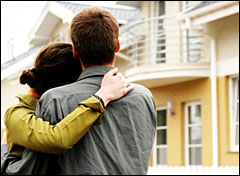Dear Umbra,
I’m an apartment dweller in the San Francisco Bay Area, where it doesn’t get too cold or too hot. Still, my energy bill is much too high for my liking and I’m wondering what I can do to bring down the cost and the waste. Any suggestions for non-homeowners?
Sarah J.
Oakland, Calif.
Dearest Sarah,
Renting is a blessing and a curse: little control, and little responsibility. You don’t get to make long-term, expensive investments, but you can certainly undergo behavior modifications to reduce your energy bills. I’ve offered the generally recommended steps over the years, and I’m happy to collect them all here. We might as well go room by room.

Love will tear us apartment.
In the kitchen, our main hope for energy savings is in reducing hot water use in the sink and dishwasher. Install low-flow attachments on the sink — and, in fact, on all the faucets in your apartment. If you have a dishwasher that’s not a dinosaur, use it; the newer models are more efficient than cleaning dishes by hand. Run it only when full, and don’t use the “heated dry” setting. Use a dish tub if you do have to lave the old-fashioned way. Keep the fridge and freezer relatively full and at 36 to 38 degrees Fahrenheit for the main compartment and between 0 and 5 degrees for the freezer. Turns out, cleaning the coils doesn’t make a big difference in fridge energy use. Phew. (As an aside, replacing an old refrigerator with an Energy Star model is good, so if you can persuade your landlord …) Microwaves and plug-in kettles are more efficient than using the stovetop and oven.
Over in the bathroom, we can continue our crusade to get in less hot water. We’ve already installed a flow restrictor on the faucet, and now we can put a low-flow head on the shower. Take short showers and fewer baths if you can bear it (I personally find bath restriction an onerous duty).
In the bedroom, a major help is to have an ample comforter, so the thermostat can be turned down as far as possible at night. The overall goal, of course, is to keep the thermostat as low as you can when it’s cold outside, and as high and un-air conditioned as you can when it’s warm. If you or the landlord can pony up the dollars for a programmable thermostat, it may be worth it. They’re fairly cheap, and they always remember to lower the heat while we’re at work — something we ourselves might forget. It takes less energy to reheat or re-cool the apartment when you get home than it takes to keep it toasty or cool while you’re away.
Throughout your dwelling, replace incandescent bulbs with compact fluorescents, and turn off lights when you leave a room. Turn off your computer if you’re not going to use it for an hour. Unplug electronic devices that come with LED lights or standby functions: These draw small amounts of power that add up over time. The same goes for “wall warts” such as cell phones and iPod chargers — even when they’re not charging anything, they’re drawing phantom energy. Power strips are a handy way to turn off a whole bunch of the suckers at once.
There is also a lot you can do with your windows, which can be huge panes in the glass (sorry). Windows, seriously, are a major source of excess heat loss and heat gain, but here I’ll refer you to a previous column that examines the problem in detail. Suffice it to say that key items for window efficiency include curtains, caulk, and glazing. As to doors, if your apartment has one leading to the outside, you might consider putting weather-stripping around the jamb.
What else? Laundry should be washed in cold water and hung dry when possible. If you’re doing all these things already and have rooms and quandaries I haven’t imagined, then I have failed you today. Write back and let me know, and I’ll see if I can dig a little deeper.
Guaranteedly,
Umbra


